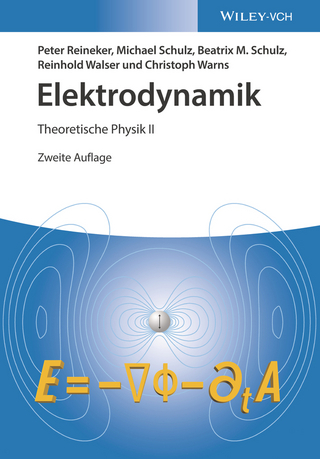
Electrical Properties of Materials, 11th Edition
Oxford University Press (Verlag)
978-0-19-892098-4 (ISBN)
- Noch nicht erschienen (ca. August 2024)
- Versandkostenfrei innerhalb Deutschlands
- Auch auf Rechnung
- Verfügbarkeit in der Filiale vor Ort prüfen
- Artikel merken
The electrical properties of materials are fundamental to many devices encountered in daily life and in today's industry, ranging from the semiconductors used in microelectronics to the dielectric materials in liquid crystal displays, the magnetic materials in the motors of electric cars and the superconducting materials in MRI scanners. All stem from the response of electrons to electric and magnetic fields.
This book explains the phenomena, reviews the best materials, and presents the most relevant applications. The behaviour of electrons in atoms, liquids, solids, and periodic crystals is described, and the possibilities of new artificial materials are discussed. In themselves, electrons are intriguing, sometimes displaying particle-type and other times wave-type behaviour. Full understanding of wave properties requires quantum mechanics, often seen as a barrier due to the unfamiliarity of the concepts involved and the complexity of the mathematical apparatus needed. A key aim is to overcome these difficulties. Underpinning theory is explained as simply as possible.
Classical and quantum mechanics are used as appropriate, in each case giving a full development and often presenting complementary viewpoints. Examples are presented in a comprehensive set of problems. This flexible approach allows full understanding both of fundamentals (for example, the properties of atoms in different columns of the periodic table) and of applications (the design of a new laser based on an artificially engineered band structure). The contents have been successfully refined over more than 50 years and are especially suitable for undergraduates and postgraduates in Materials and Electrical Engineering.
Laszlo Solymar was Emeritus Professor of Applied Electromagnetism at the University of Oxford and Visiting Professor and Senior Research Fellow at Imperial College, London. He graduated from the Technical University of Budapest in 1952 and received the equivalent of a PhD in 1956 from the Hungarian Academy of Sciences. In 1956, he settled in England where he worked first in industry and later at the University of Oxford. He conducted research on antennas, microwaves, superconductors, holographic gratings, photorefractive materials, and metamaterials. He has held visiting professorships at the Universities of Paris, Copenhagen, Osnabrück, Berlin, Madrid, Budapest, and Imperial College, London. He has published 9 books and over 400 papers. He has been a Fellow of the Royal Society since 1995, and received the Faraday Medal of the Institution of Electrical Engineers in 1992. The late Donald Walsh was an Emeritus fellow of Oriel College, Oxford. He graduated from King's College London during the second world war. He then worked for seven years at the Mullard Radio Valve Co, developing photocells and flash tubes, then for about the same period at the Services Electronics Research Labs (SERL) on travelling wave tubes, klystrons, and TR switches. He came to the Department of Engineering Science, Oxford in 1956 as a Research Fellow to help the newly appointed Reader in Electrical Engineering start a research group in microwave electronics, and later became a Lecturer and College Fellow. Richard R. A. Syms has been Professor of Microsystems Technology in the EEE Department at Imperial College London since 1996. He graduated in Engineering Science at Oxford University in 1979, and obtained a DPhil in 1982, also from Oxford. He carried out postgraduate work at University College London, Oxford University, and the Rutherford Appleton Laboratory before moving to Imperial. He has published over 200 journal papers and 2 books on holography, guided wave optics, electromagnetic theory, metamaterials, magnetic resonance imaging, and micro-electro-mechanical systems (MEMS). In 2001, he co-founded the Imperial College spin-out company Microsaic Systems. He is a Fellow of the Royal Academy of Engineering, the Institute of Electrical and Electronic Engineers, the Institute of Physics, and the Institute of Engineering and Technology.
| Erscheint lt. Verlag | 27.8.2024 |
|---|---|
| Zusatzinfo | 434 line illustrations and halftones |
| Verlagsort | Oxford |
| Sprache | englisch |
| Maße | 189 x 246 mm |
| Themenwelt | Naturwissenschaften ► Physik / Astronomie ► Elektrodynamik |
| Naturwissenschaften ► Physik / Astronomie ► Thermodynamik | |
| Technik ► Maschinenbau | |
| ISBN-10 | 0-19-892098-9 / 0198920989 |
| ISBN-13 | 978-0-19-892098-4 / 9780198920984 |
| Zustand | Neuware |
| Haben Sie eine Frage zum Produkt? |
aus dem Bereich


